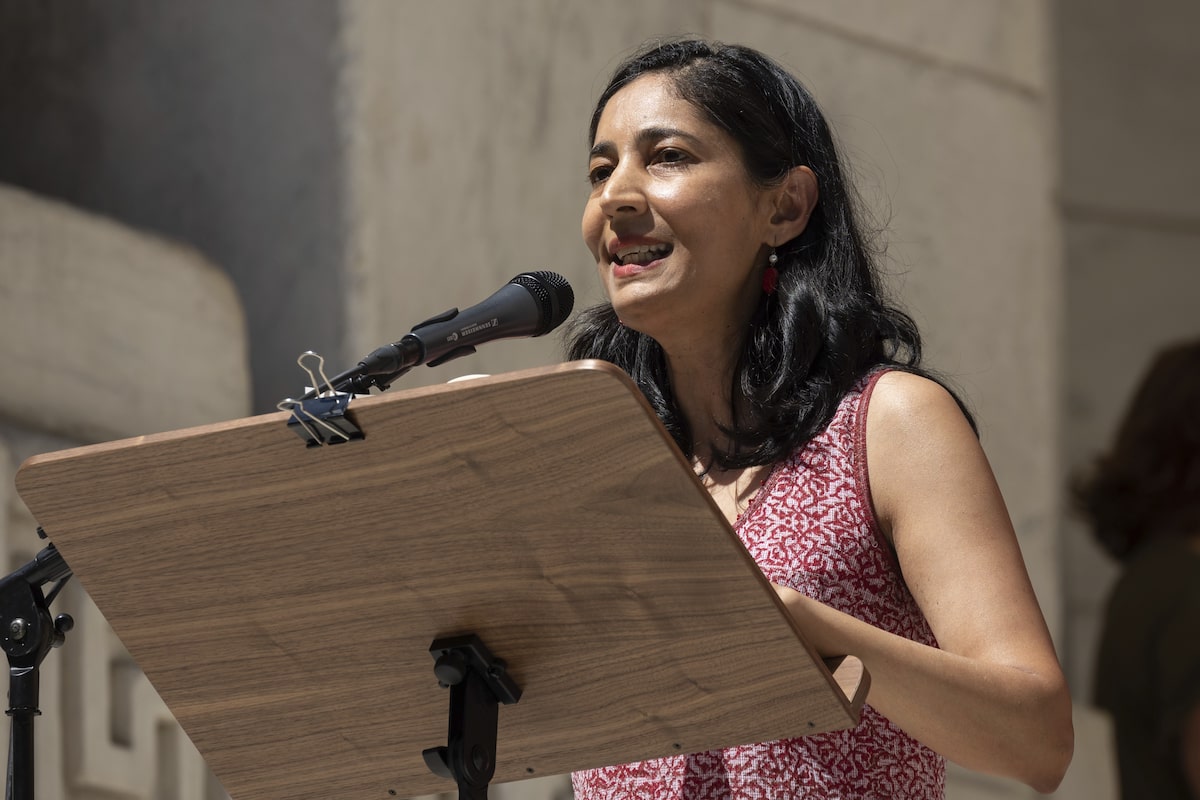Family ties are central to Kiran Desai’s third novel, The Loneliness of Sonia and Sunny.Yuki Iwamura/The Associated Press
Title: The Loneliness of Sonia and SunnyAuthor: Kiran DesaiGenre: FictionPublisher: KnopfPages: 688
During the deep freeze of a Vermont winter, Sonia Shah’s loneliness as a college student away from home in New Delhi leads her to a relationship that quickly ensnares her in a much more dangerous sort of isolation.
Pursued by an older Dutch artist, she becomes subsumed by his life – his laundry, his paternalistic opinions on her writing, his terrifying moods when she praises another painter. Even as Sonia desperately attempts to hold on to his affection, she recalls wisdom her mother passed down to her: “She knew that an artist was a slippery person and that art could be a slippery endeavour, that an artist may follow the darkness until eventually the darkness followed him.”
The artist’s darkness casts a pall over Sonia’s life, long after he leaves her, and into the next chapter of her romantic life when she meets Sunny Bhatia, whose grandparents are neighbours with her own in Allahabad.
The Loneliness of Sonia and Sunny is Desai’s long-awaited third novel since winning the Booker for her last novel, Inheritance of Loss, in 2006. After that, she set out to write “a present-day romance with an old-fashioned beauty,” and it has already been shortlisted for the Booker Prize and the Kirkus Prize.
Born in India, Desai spent her formative years there but now lives in New York. Although she initially planned to pursue science in her own postsecondary education in Vermont, she was pulled into the world of fiction, perhaps unsurprisingly, given her literary lineage – her mother Anita Desai has been shortlisted for the Booker three times.
Arundhati Roy’s Mother Mary Comes to Me is a rollicking memoir of a life without guardrails
Family ties are central to Desai’s epic, which spans nearly 700 pages, as she deftly builds out Sonia’s and Sunny’s worlds. When the novel opens, both are in the U.S. pursuing writing, Sunny as a journalist with The Associated Press in New York, while Sonia writes fiction. Both struggle with the kinds of stories they want to tell – both playing to and decentering Western audiences. And both are hiding their romantic relationships, Sonia’s with the abusive artist, and Sunny’s with his Kansas-bred girlfriend, Ulla, who provides him with the proximity to whiteness he longs for.
When Sonia’s grandparents arrange to send Sunny’s family a marriage proposal after hearing their granddaughter is struggling on her own in America, Sunny’s haughty mother Babita sends the message to her son, intended as a laugh. But in doing so, she unwittingly unravels his relationship with Ulla. When the titular pair meet eventually, Sunny becomes entranced with Sonia, sending Babita into a panic. As a widow, she is loath to lose her son to anyone, let alone a woman she feels is from a family below her station.
Desai gives each character a rich backstory, all connected by the thread of how loneliness undoes them – Sonia’s father drives her mother away with his possessive nature, just as Babita drives her son away with her heavy expectations. The only person who appears not to be lonely is Sonia’s mother, who returns to the mountainous region she was raised in search of solitude.
And just as Babita struggles with Sunny “trumpeting the American mantra of individuality and self-sufficiency in order to disguise his selfishness,” Sonia must accept her mother’s decision to leave her father. Desai creates layered family dynamics where not only the ideas parents had for their children have to be reconsidered, but also the ideas children had for their parents.
The books spans from Goa to Allahabad within India, and reaches beyond its borders to Italy, Mexico, the U.S., amplifying not only how the world has expanded for a certain type of Indian but also the alienation that can result – from one’s family, culture and, ultimately, one’s self.
As Sonia’s mother roots herself in her past, the rest of the cast is hurtling into the future, where Sonia’s work covering the luxury travel industry, replete with fake palaces, makes her realize “India was becoming rich enough to become a faux version of itself.” But the rise of a new type of homegrown wealth has no impact on the burdens of filial duty, the legacy of corruption, and a creeping Hindu nationalism.
Most crucially, Desai shows it’s a world in which a woman without a man is still seen as a woman without protection. Babita’s insecurity as a widow is rooted in a real fear of no one to rely on, Sonia’s spinster aunt gets sent to live at a convent after her father dies, while Sonia herself is advised by her father after being assaulted to “never put yourself in that position again.”
Desai covers these themes with the depth and nuance they deserve, and without sacrificing humour. “Western psychology is no match for an Indian family,” quips Sunny’s uncle in response to his nephew’s complaints about his mother.
Desai exceeds the expectations of a literary novel, weaving a multitude of characters, storylines and incisive ideas into a single cohesive masterpiece.

